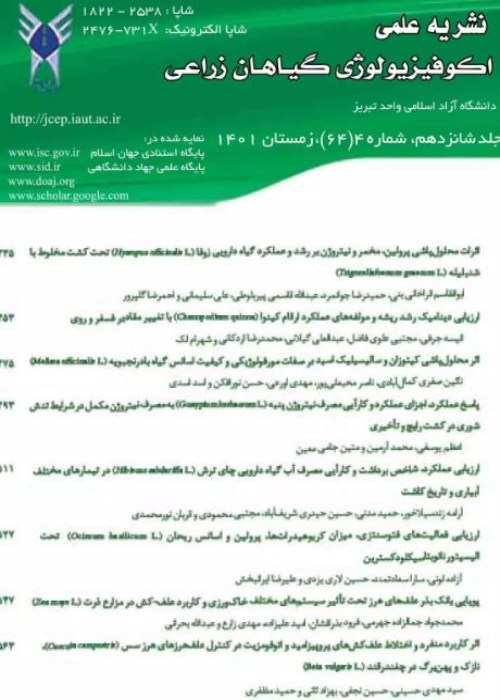Response of Durum Wheat Genotypes to Different Planting Dates and Plant Densities under Dryland Conditions
The present study was conducted to investigate the response of durum wheat cultivars to different planting dates and densities under rainfed conditions during the years 2014-2016 in Sararood, Kermanshah, using a split plot factorial experiment based on randomized complete block design with four replications. Three durum wheat genotypes (SAJI, BCR and STJ) with three sowing dates, prior to effective rainfall (the amount and time of effective rainfall were 33.2 and 34.5 mm, and 26 October, and 5 November for two years of experiment, respectively). 15 days after effective rainfall and 30 days after effective rainfall were evaluated for four densities of 250, 350, 450 and 550 plant per square meter. Traits like number of spikes per square meter, 1000 kernel weight, seed and biological yield, harvest index and absorbed radiation percentage were measured. The results of mean comparisons of simple effects showed that the number of spikes per square meter in the planting date before rainfall was more effective than two other planting dates. Biological yield and absorbed radiation percentage were 26.9 and 12.9 percent higher respectively in second year of experiment as compared to the first year. Comparison of interactions means showed that STJ genotype under 250 seeding density and 15 days sowing date after effective rainfall, produced highest 1000 kernel weight, while SAJI cultivar at 550 seeding density and planting date before effective rainfall showed the highest kernel yield. The SAJI cultivar showed highest biological yield under 450 seeding density and planting date before effective rainfall. For all three genotypes, the highest percentage of radiation absorption was observed when sowing date used before rainy season using 450 and 550 seeding densities. In this study all genotypes showed the highest traits values at first planting date and under 450 seeding density. The highest values of protein and chlorophyll content were observed using 350 seeding density.
- حق عضویت دریافتی صرف حمایت از نشریات عضو و نگهداری، تکمیل و توسعه مگیران میشود.
- پرداخت حق اشتراک و دانلود مقالات اجازه بازنشر آن در سایر رسانههای چاپی و دیجیتال را به کاربر نمیدهد.



